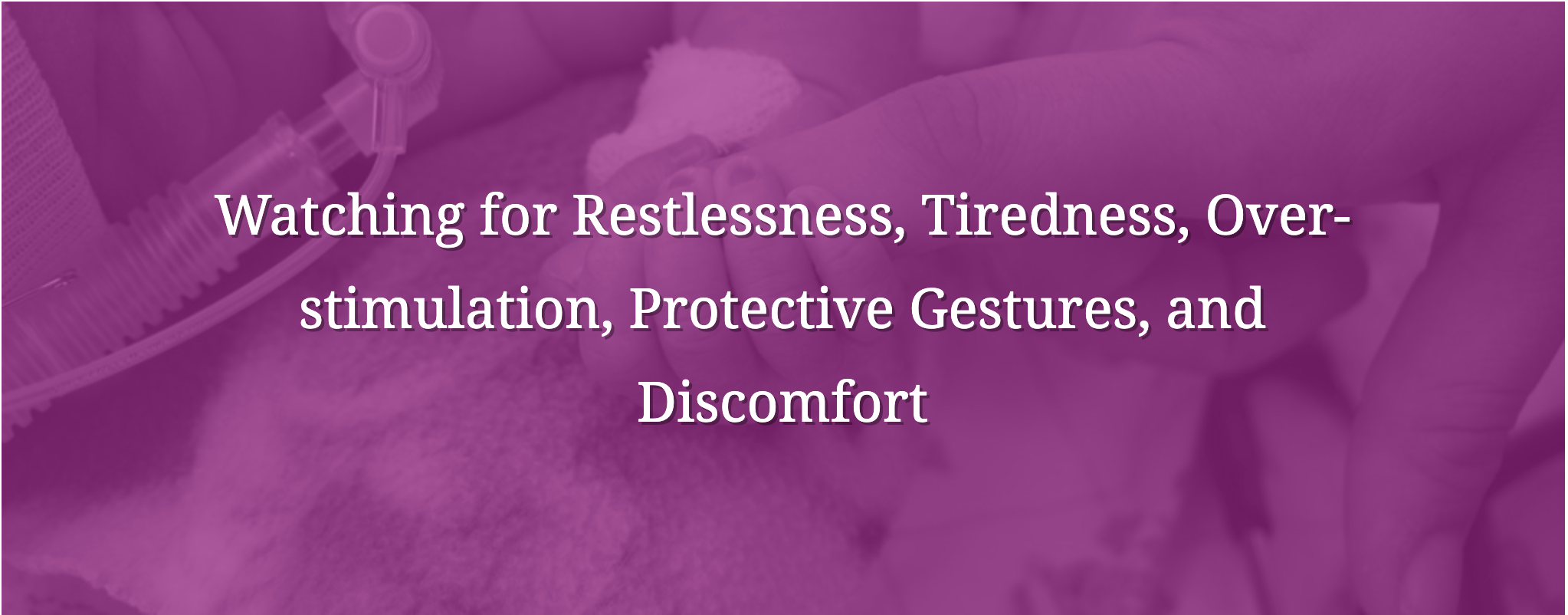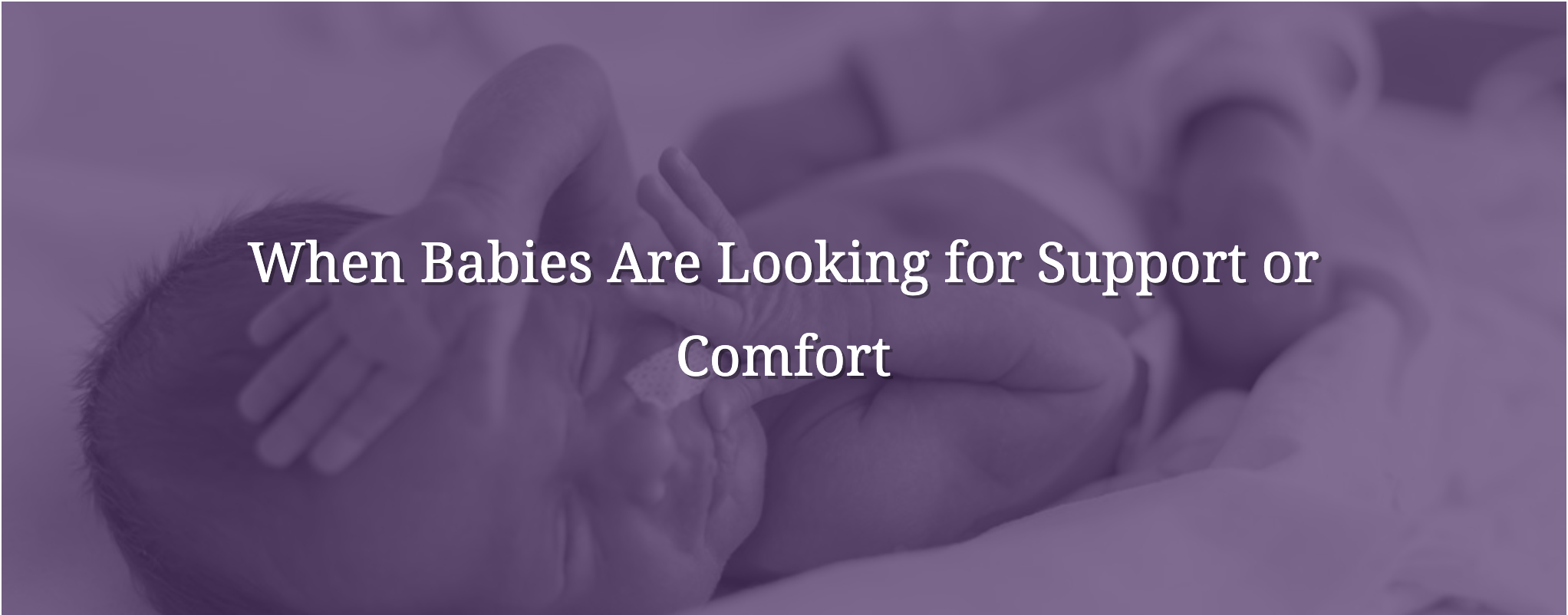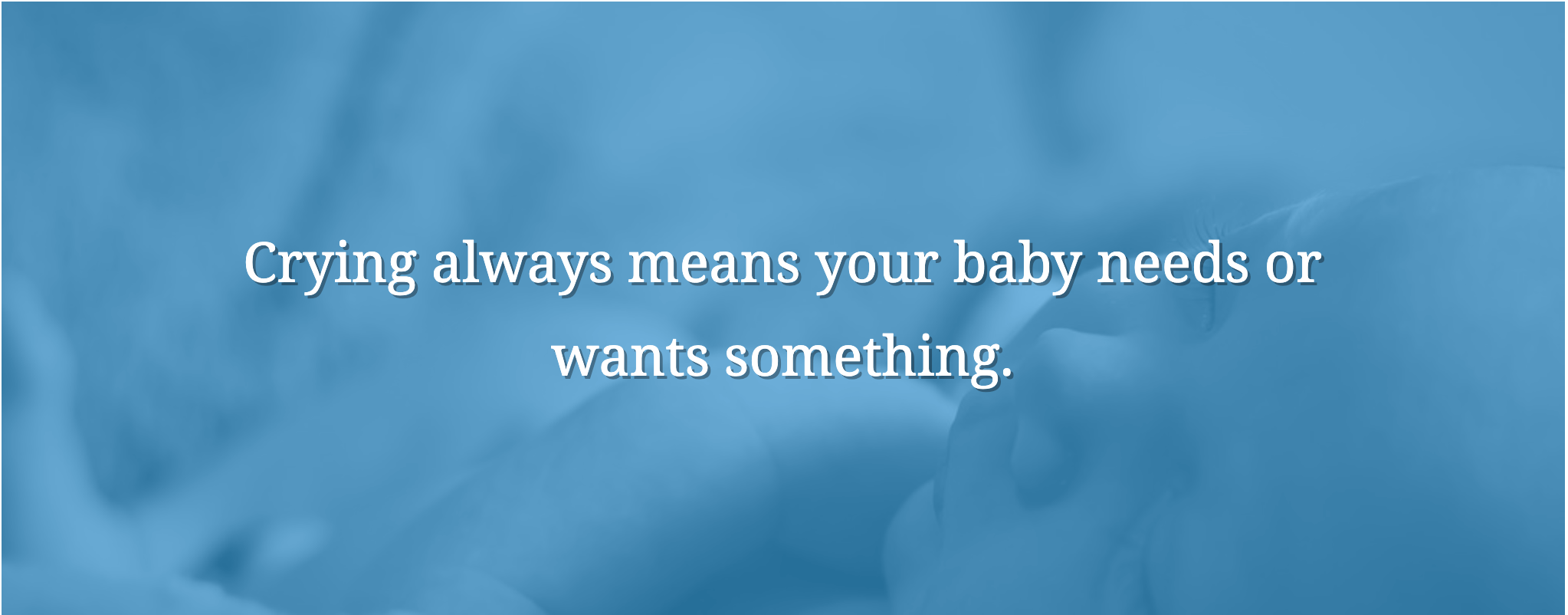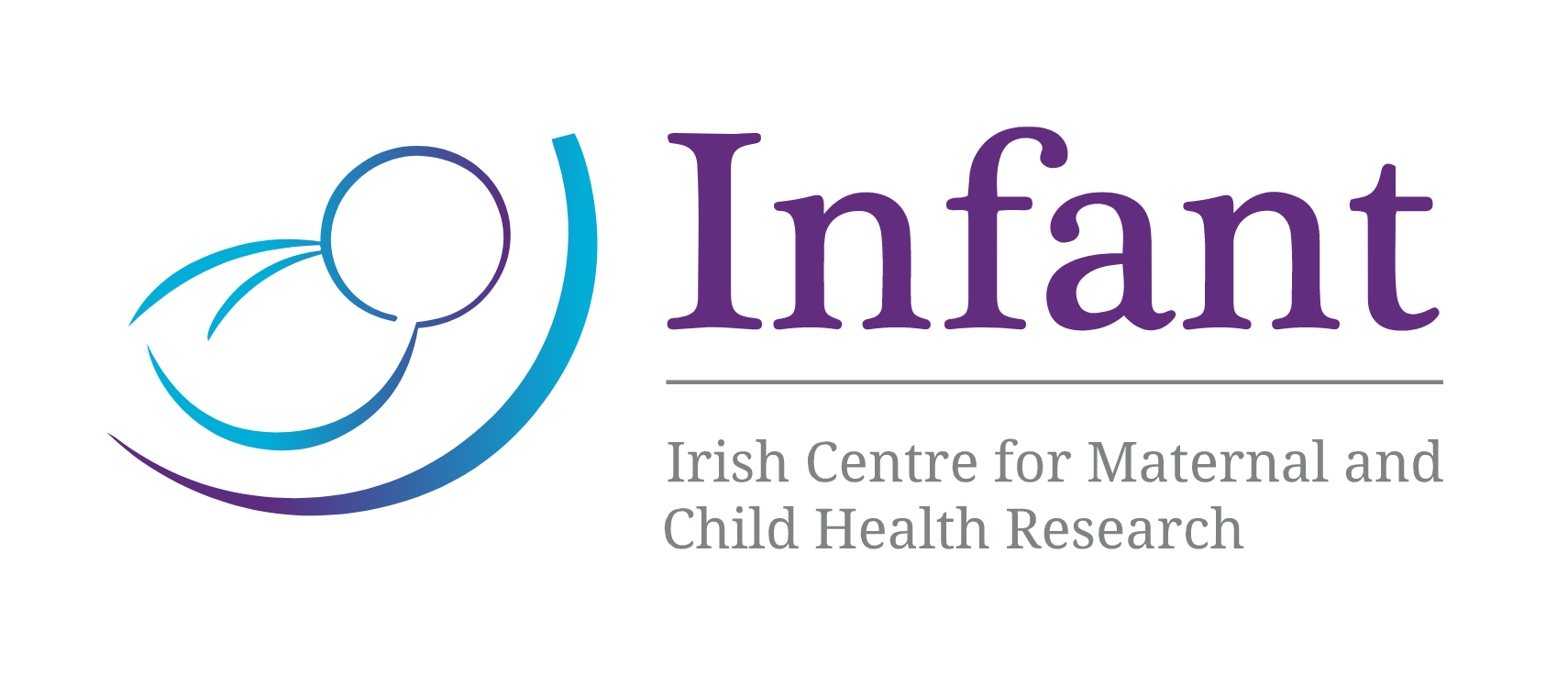Understanding Your Baby’s Cues
By watching your baby, you will learn their characteristics and how to communicate with them. Paying attention to their changing facial expressions, and taking note of their hand and feet movements will give you clues
To start, you will learn to identify when your baby is distressed or over-stimulated. In time, you will learn the various cues that your baby will use to communicate with you. Learning these will help you communicate with your baby, who in turn may respond to you more often.

How to Know if Your Baby is Tired or Restless
- Watch your baby’s breathing and note changes in speed, depth or rhythm. This will tell you if your baby is settled or wakeful, or more tired and restless. Regular and relaxed breathing indicates that your baby is comfortable.
- Notice changes in your baby’s skin tones. Dusky shades around the eyes, mouth or blotchy patterns on their body can become more evident during care-giving. These shades can indicate that your baby needs to pause, requires comfort or a change in position.
- Hiccoughs, yawns, sneezing, or positing (bringing up some milk) indicate that your baby is tired or overwhelmed. Hiccoughs, positing and yawning are common among newborn babies after feeds and indicate the need for sleep.
- Premature babies make squirming movements when they are tired or overwhelmed.
- If your baby’s cheeks look slack and their mouth is open, they are telling you that they have run out of energy and require a break.
How to Tell if Your Baby is Over-Stimulated
Preterm babies protect themselves from stressful overstimulation situations by:
- Frantic activity
- Stiffening their limbs
- Appearing drowsy
- Displaying a limp posture
- Showing a panicked facial expression
- Looking away (gaze aversion)
- Hand-to-mouth manoeuvres
- Bracing their feet against the side of the incubator
These responses are exhausting for your baby and should be avoided.
Your Baby’s Protective Gestures
If a stimulation is inappropriate in its timing, quantity, or intensity, it will cause your baby to defend against it. Preterm babies use protective gestures by:
- Bracing their feet against something
- Raising their arms with their hands wide open
- Shielding their face, eyes, and ears
- Turning away
Signs Your Baby Needs To Rest
Your baby will do the following when they need time to rest:
- Close their eyes.
- Turn away from you.
- Start irregular breathing patters
- Stretching or wriggling
- Their body becomes limp or stiffens
- Their arms and legs straighten and stiffen
- They spread their fingers and toes out.
- They thrust/throw their arms and legs rigidly into the air.
- They arch their back.
- They place their hands over their face (palms outward with fingers spread).
- They frown, yawn, grimace, grunt, moan, or hiccough.
- Their mouth may fall open and droop.
- They fall asleep.
If you see these time-out gestures, stop what you are doing and give your baby some time to rest. You can let your baby calm, or get some rest, with a comfort hold. If you must finish the activity, e.g., a nappy change, then restart slowly and quietly.
Signs Your Baby Is In Discomfort:
Cues that suggest your baby may be in pain include:
- Tightly fisted hands
- Grimacing
- Bulging forehead
- Eyes squeezed shut
- Fast heart rate
- Changes in breathing.
If you think your baby is experiencing pain, always raise your concerns with the medical team.

When Your Baby is Seeking Support
It is very common for babies to make little twitchy and tremulous movements: they are a sign of immaturity in premature babies. Babies find it difficult to coordinate movements, and tend to run out of energy quickly after bursts of activity. If your baby is seeking additional comfort and support, they will:
- Have a limp appearance
- Arch their back
- Stretch their limbs out stiffly
- Lift their stiff limbs off the bed
If your baby is showing signs of distress, give them time to recover and rest.
Feeling Comfortable And Ready To Interact With You
Babies use self-soothing gestures to get comfortable and to show that they are ready to interact with you. When your baby is comfortable and/or are ready to listen and respond to you, they do the following:
- Their eyes are open, or they open their eyes in response to your voice.
- They have a relaxed open facial expression, or are smiling.
- Their mouth is relaxed and slightly open. They may make sucking movements.
- Their breathing is relaxed and regular.
- Arm and leg movements are smooth.
- They bring their hands to their mouth or face.
- Their hands are clasped together.
- They are sucking on their hand or finger.
- They are holding onto something.
- They press their feet against the bedding (leg bracing). To make your baby comfortable ensure that their feet are supported with the bedding.
- They are resting one foot against the other.
- Their body is in a curled-up position.
- They have tucked their limbs close to their body.
- They look at you even if only briefly.
- They calm in response to your voice.
- They are quietly awake and still.
If a stimulation is appropriate in its timing, intensity, or quantity, your baby will seek it out and move towards it. As your baby matures, they will become quietly alert and will be able to pay attention for longer, turning their heads to follow your movements, face, or sounds.
Habituation
As your baby matures, they will gradually learn to be less reactive and sensitive to every stimulus, and will be more alert and sociable. Watch for their signals inviting you to interact.
To begin with, present a still face and quiet voice then experiment with more expression and vocal tones. A simple way to test your baby’s sensitivity and readiness to respond is to observe their response to light. If your baby continues to display a startled response to the light, they are not able to “shut-out” or stop themselves from reacting to the stimuli. They will need to be protected by reducing light until they develop further. Shading your baby’s eyes from any bright lights in the neonatal unit is important. Ask for an incubator cover for your baby’s incubator with a corner folded back so that you can keep an eye on them, but their face is in the shade.
If your baby is able to shut out the stimulus, they will initially react to the light, but then they will get used to the stimulation and not react or be affected by it. This is called habituation.

For the first time parent, a baby crying can feel like the worst thing in the world. Your mind may be full with worry, asking yourself: what do they need? Why aren’t they happy? Are they sick? Why can’t I help them? Will they be okay?
Babies cry – it’s what they do. They don’t know how to talk!
Babies do not cry just to be bold, or to give you trouble. Your baby may be crying because they are: lonely, too hot or cold, hungry, frightened, sleepy, overtired, or may have wind.
So What Can I Do When My Baby Is Crying?
There are many things you can do to soothe your baby. Rather than doing them all at the same time, try one approach for 10 to 15 minutes. If it doesn’t work, try something else. You’ll find that a certain approach works best at a certain time. You’ll also learn how to understand your baby; knowing what approach to try first. Below are some ideas that you could try:
- If breastfeeding, put your baby to your breast for feeding or for the comfort of sucking.
- Carry your baby and cuddle them using a firm hold. A baby sling may help prevent your arms getting tired.
- Give your baby a clean finger to suck while you hold them or use a soother.
- Lay your baby on your lap and rub their back gently.
- Change their nappy.
- Check for any tight clothing.
- Talk, or sing, to them.
- Listen to music together.
- Wrap the baby firmly in a light blanket and rock them in your arms, or in a pram, in a quiet, dark place.
- Massage your baby gently with unscented oil.
- Put your baby in the pram, or baby sling, and go for a walk.
- Go for a car ride. The motion in the car may settle them. Remember that your baby should be in an appropriate car safety seat.
- If you feel you can’t cope, ask your partner to ‘tag-in’. Alternatively, put your baby in a safe place such as their cot and go into another room for a ‘breather’ for a few minutes.
- Take some deep breaths, have a cup of tea, and rest for a few minutes. If you are relaxed, it is more likely your baby will relax when you try to settle them again.
- If your baby has a high temperature, a high-pitched cry, blood in the nappy, is vomiting, seems ill, or is crying all the time, contact your doctor.
- Talk to your public health nurse or doctor about how you feel. If you think the crying is associated with how you are feeding your baby, either your milk or the way your baby takes your milk or takes the bottle, talk to your nurse, lactation consultant, or voluntary breastfeeding support person.
- If you feel your baby’s crying is a breast feeding issue, CUMH operate a Breastfeeding Support Helpline. You can contact Susan O’Driscoll or Mary O’Donnell on 021 4920752 or 087 6623874, Monday to Friday.
Babies don’t have a sense of why they are crying and have essentially no control over it. Therefore, it is a good idea to respond straight away so that their needs are met before they’ve forgotten why they are crying and are only crying because they have become distressed. As your baby gets older, you will want to make sure that you are paying attention to what the cries mean, i.e. you will get to understand their personality and know how to respond.
Babies will realise that you come to them when they cry, and the louder they cry the more likely you are to come. You want to teach your child that you will always be there, but you don’t want to teach them that, when they don’t get something they want, they should cry louder.
